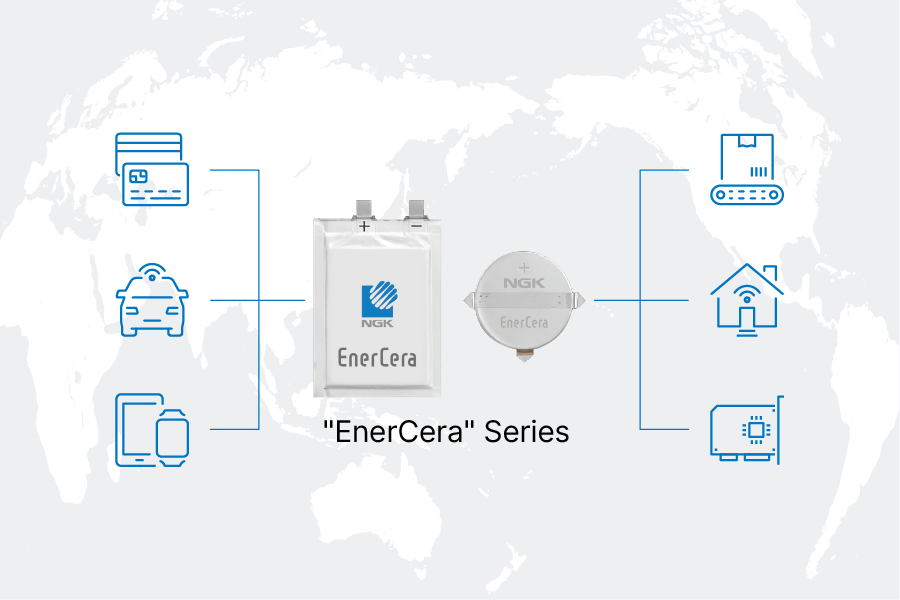Factory automation sensor manufacturerDevelopment Group
EnerCera Battery Solves RTC Power Supply ChallengesPower supply issues jeopardize smart factory operations

Solutions
Supporting the Transition to Industry 4.0
Solution Offered by EnerCera battery
EnerCera battery operates over a wide range of temperatures (-40 to 105℃).
Even under float charge in hot temperature conditions, EnerCera battery exhibit little degradation, therefore do not require periodical replacement.
The use of EnerCera battery reduces the waste associated with non-rechargeable batteries, thereby reducing the environmental impact of the device.
EnerCera battery can be reflow soldered, resulting in a manufacturing process that is less labor-intensive.
The Ideal RTC Backup Battery
A member of the manufacturer’s development team, who had been broadening the search for information on batteries, came across NGK’s EnerCera battery website. A look at EnerCera battery’s specifications and sample applications convinced him that EnerCera battery was just what his team needed to resolve their issues and immediately contacted NGK to find out more. He was informed by an NGK representative that EnerCera ET series batteries can withstand temperatures of up to 105℃ and has a slim, 1.3mm profile. Furthermore, EnerCera ET series batteries can both be charged in constant-voltage mode, and, like capacitors, charged continuously at constant voltage, and maintain an output voltage of 2.3V until they are fully discharged. Having verified that EnerCera battery will not degrade even when excessively discharged, they were convinced that EnerCera battery was a safe and the optimum solution to be used for RTC backup battery.
A Rechargeable Battery That Behaves Like an Electronic Component
Upon receiving a sample of the EnerCera ET1210C-H, the development team decided to evaluate its power supply performance using a number of prototypes. They found that the battery performed exactly as NGK’s specification. The team was especially impressed with the battery’s low self-discharge rate of around 5% (around 0.3μA) per month. They also learned that EnerCera battery could withstand a single exposure to reflow soldering at 240℃. The ability to incorporate the battery into electronic circuits also reduced the amount of labor required for mass production. These findings made the manufacturer decide to move forward with product development with a view to early release on the market, in the hope that the device will hope factories transition to Industry 4.0 standard.


